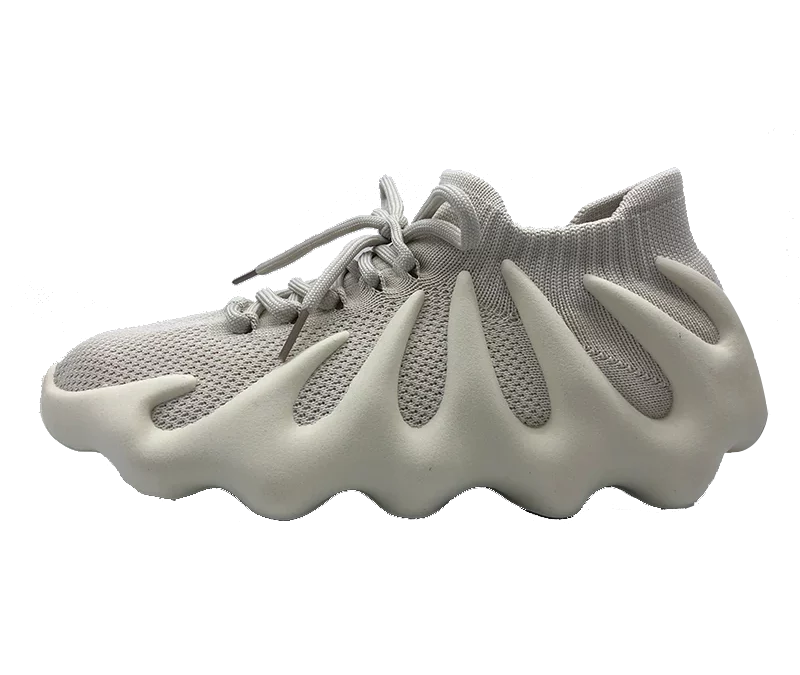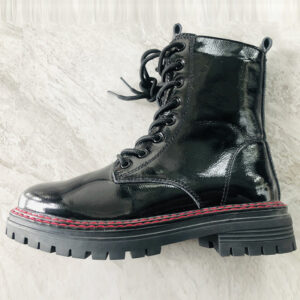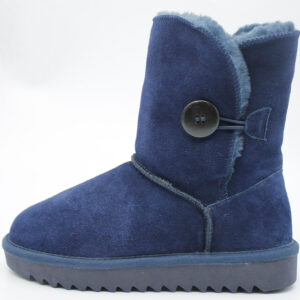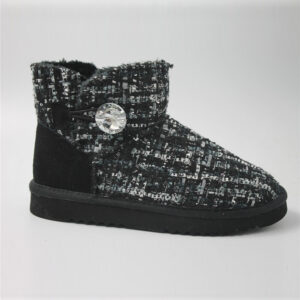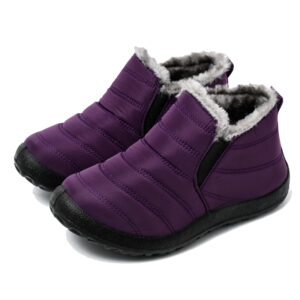If you’re just starting out with running, having the right running shoes is crucial. Running shoes these days come in a huge variety of styles, brands, technologies and price points. With so many options, it can be overwhelming trying to pick the best running shoes as a beginner. In blog post, I’ll go over some key things to look for when choosing your first pair of running shoes.

Fit and Comfort
The number one factor in choosing running shoes is getting the right fit. Your shoes should fit snugly without being uncomfortably tight. There should be about a thumbs width of space between your longest toe and the end of the shoe. The shoes shouldn’t slip up and down or side to side on your heel when walking or running.
Since your feet swell a bit when running, it’s best to shop for running shoes later in the day when your feet are largest. Also try on running shoes while wearing the type of socks you plan to run in.
Walk and jog around the store in the shoes to make sure they feel comfortable. The shoes shouldn’t rub anywhere or feel like they’re pushing against parts of your foot. The ideal running shoe will have a comfortable, secure fit from the first wear.
Cushioning
Proper cushioning is important for absorbing impact and reducing injury risk. Running shoes come in different cushioning types like neutral, stability and motion control.
As a beginner, neutral cushioned shoes are best for most people. They provide good overall shock absorption without added stability features. Brands like Nike, Brooks, Asics and New Balance have neutral cushioned road running shoes great for beginners.
If you have high arches or an unstable stride, look for stability shoes that have features to assist pronation. If you have flat feet or feet that roll inward significantly, motion control shoes can help provide more pronation correction. Visiting a specialty running store and getting a gait analysis done can help determine if you need stability or motion control features.
Breathability
For casual running in warmer weather, you want breathable shoes to keep your feet from overheating. Mesh upper materials allow for airflow to cool feet. Some brands also add perforations in the insole or include moisture wicking liners to help keep feet dry.
Traction
Even if you’re just running around the neighborhood, you want shoes with decent traction to prevent slipping. Look for rubber outsoles with grip patterns or lugs. The more lugs, the better the traction typically. Trail running shoes have the deepest lugs for the best grip on uneven terrain. But for road and sidewalk running, shoes with moderate lugs work fine.
Weight
Running shoe weight used to not matter as much. But these days brands are making lightweight performance shoes that can make you feel speedy. For new runners, super lightweight shoes aren’t as necessary. But picking reasonably light shoes around 8-12oz can help prevent fatigue over longer distances. Prioritize fit first before zeroing in on the lightest shoes.
Budget
With so many options, running shoes can range from $60 to $180. As a beginner, you generally don’t need the priciest shoes. Good beginner road running shoes will cost between $80 to $120. Save the carbon fiber plated, highly engineered shoes for when you’re running higher mileage and racing.
When first starting out, choose an affordable shoe from a major brand like Nike, Adidas or Brooks rather than a cheaper no-name shoe. The build quality and durability will be better on shoes from reputable running brands. They’ll also have better expertly engineered cushioning for injury prevention.
Some good beginner shoe options to consider include:
- Nike Air Zoom Pegasus – A long time favorite neutral cushioned shoe perfect for daily training runs.
- Brooks Ghost – Reliable everyday neutral trainer with DNA Loft cushioning.
- New Balance 880v11 – Durable neutral shoe with Fresh Foam cushioning technology.
- Asics Gel-Cumulus 23 – Classic Asics neutral shoe with rear and forefoot Gel cushioning.
- Adidas Supernova – Boost midsole provides responsive cushioning in this daily trainer.
Don’t be afraid to try on several shoe models to find the perfect pair. Shop at specialty running stores where the staff can analyze your gait and make expert shoe recommendations.
With the right running shoes, you’ll be comfortable hitting the roads and trails as a new runner. Focus on fit first, then cushioning and other features based on your unique needs. Happy running!
